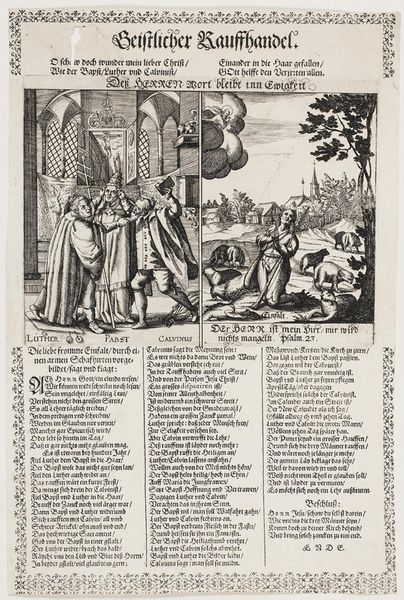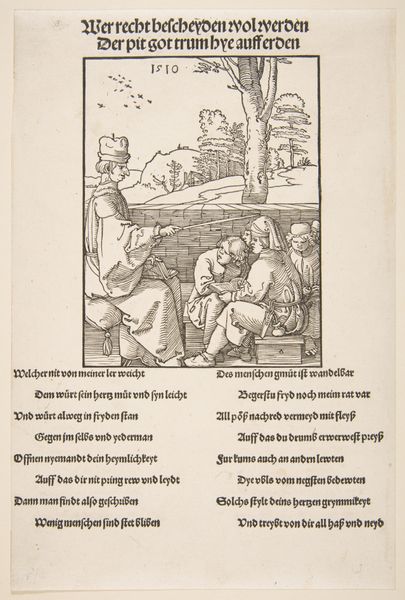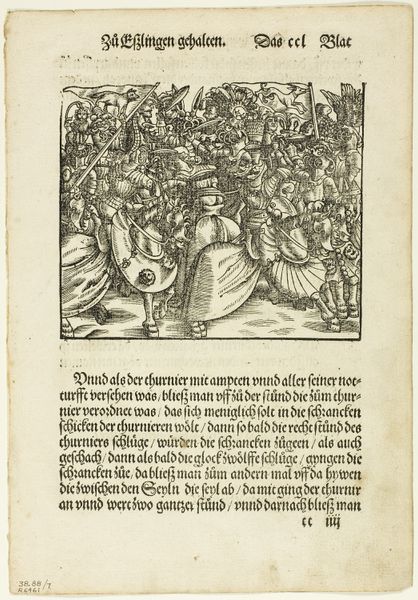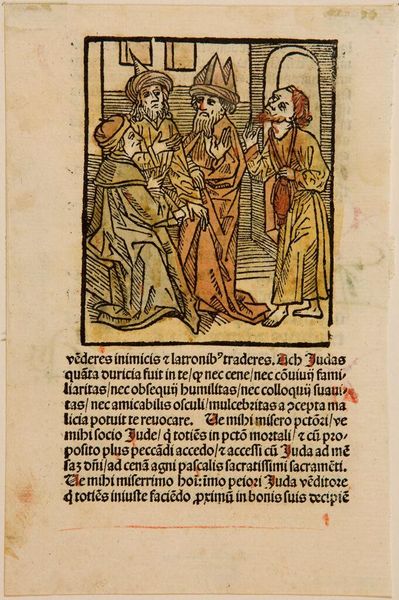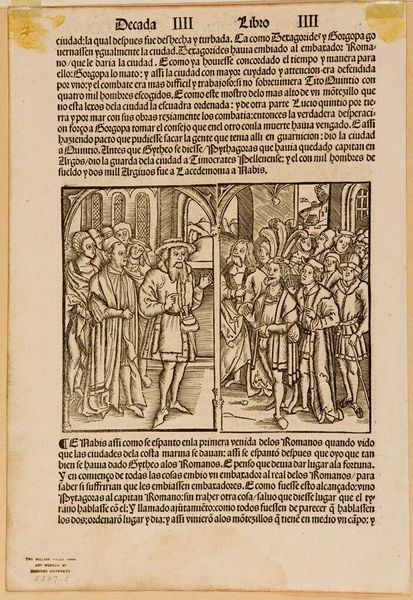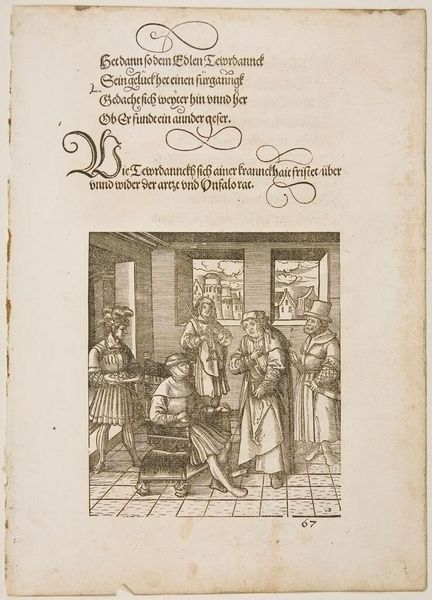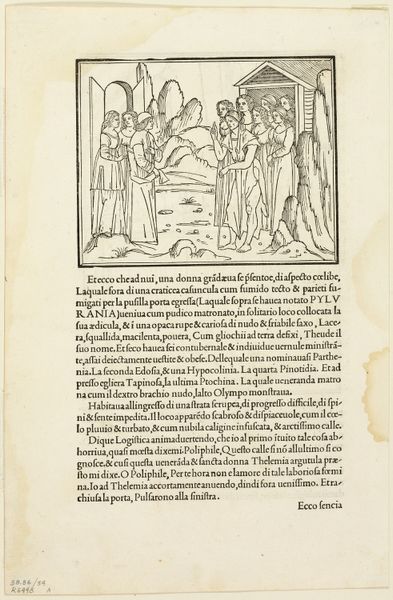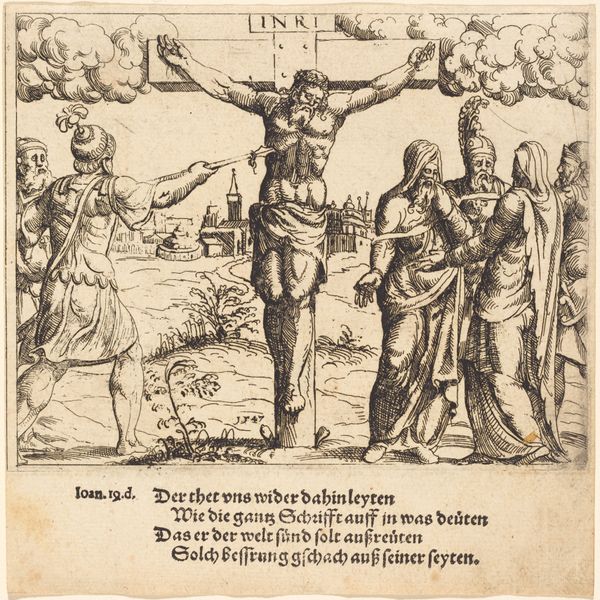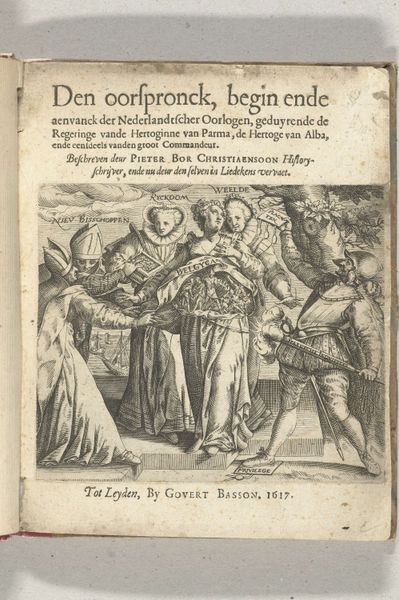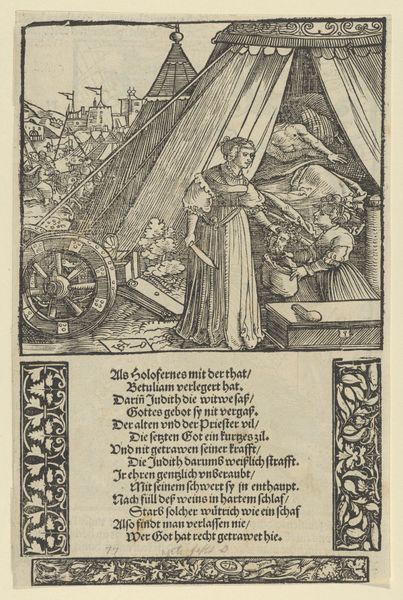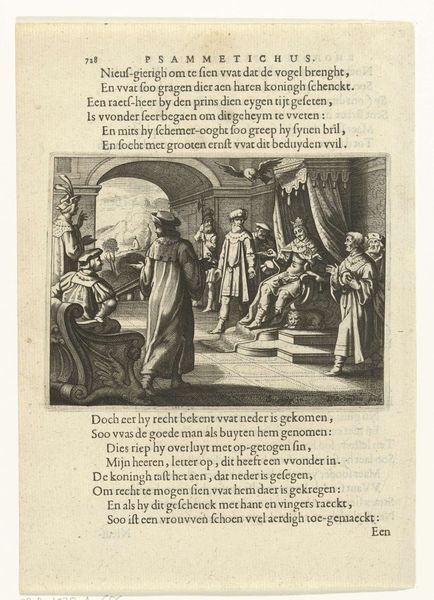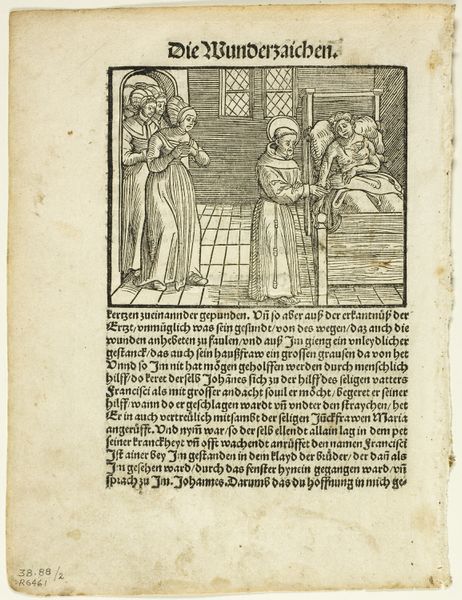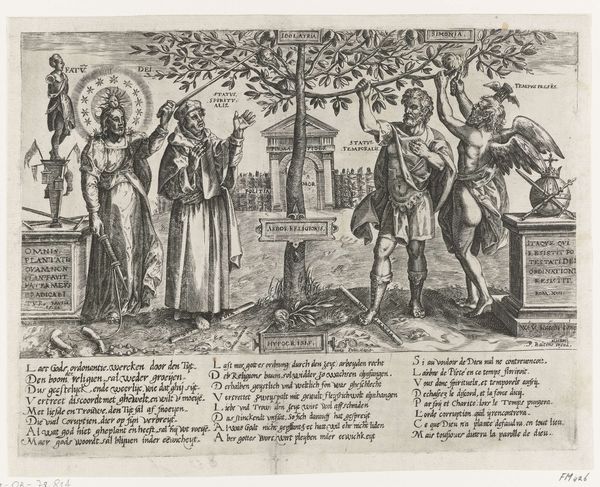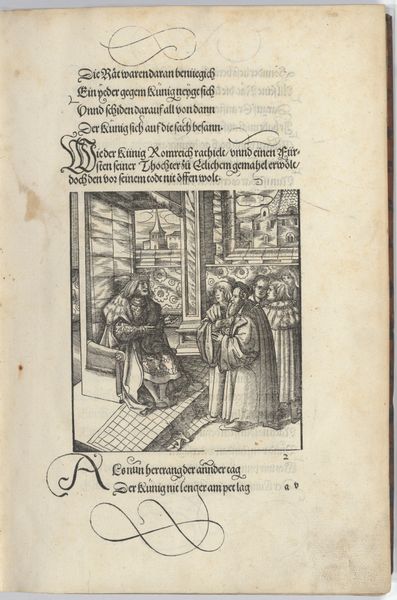
Christ on the Cross between the Virgin and Saint John (first sheet of two) 1510
0:00
0:00
drawing, print, woodcut, engraving
#
drawing
#
narrative-art
# print
#
figuration
#
woodcut
#
history-painting
#
northern-renaissance
#
engraving
Dimensions: sheet: 9 15/16 x 6 in. (25.2 x 15.3 cm) plate: 4 3/4 x 3 7/8 in. (12.1 x 9.8 cm)
Copyright: Public Domain
This woodcut was made by Albrecht Dürer, a German artist, around the early 16th century. It depicts Christ on the cross, flanked by the Virgin Mary and Saint John. Below the cross, a skull and bones symbolize Golgotha, the "place of the skull," reminding us of death and sacrifice. Consider the image of the skull. From ancient Greece to medieval Europe, it has been a potent symbol of mortality and a memento mori. We see this motif echoing through time, reappearing in vanitas paintings of the Dutch Golden Age, each time urging viewers to reflect on the transience of life. It embodies a deeply ingrained human preoccupation with mortality and the ephemeral nature of existence. Reflect on the emotional weight of such symbols; they serve as visual anchors that link collective memories and stir the subconscious, shaping our perception of mortality across generations. It's a cyclical progression, this symbol, continually resurfacing, evolving, and accruing new layers of meaning.
Comments
No comments
Be the first to comment and join the conversation on the ultimate creative platform.
